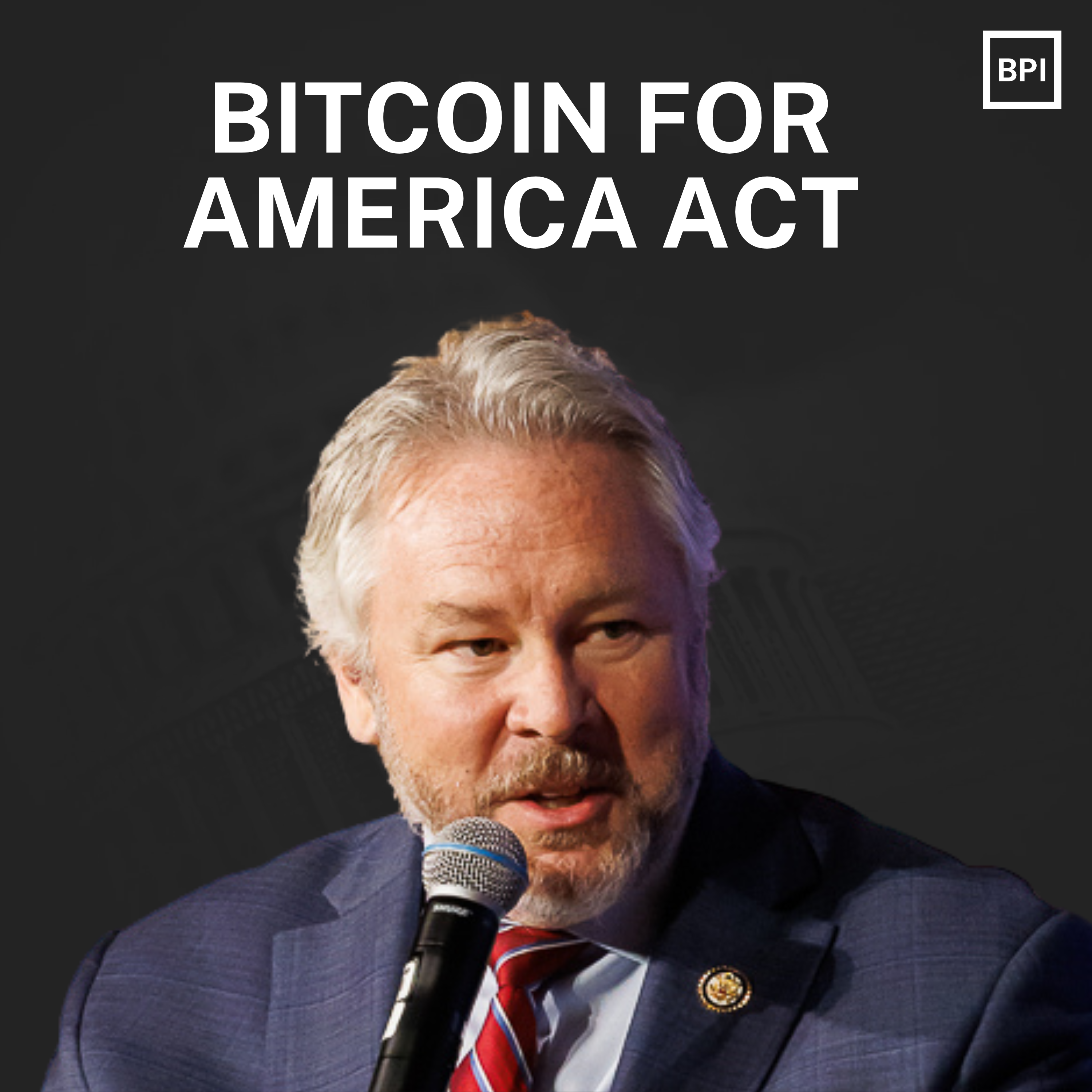Can Trump Order a Strategic Bitcoin Reserve?
What is the Exchange Stabilization Fund? And does it allow the Treasury Department to create a Strategic Bitcoin Reserve?

The Exchange Stabilization Fund (ESF) is a powerful, yet often overlooked, financial tool at the disposal of the U.S. Department of the Treasury. Recently, some commentators have suggested that the ESF could be utilized by the Treasury to establish a Strategic Bitcoin Reserve (SBR) through executive action, without the need for congressional approval. By leveraging the ESF's broad authority to purchase assets deemed necessary to bolster the strength of the dollar, the Treasury could potentially acquire bitcoin as a strategic asset.
Although it might seem counterintuitive to strengthen the dollar by investing in Bitcoin—a decentralized currency beyond government control—there is compelling reasoning behind this idea. Given the United States' growing national debt and concerns over long-term financial stability, adding bitcoin to the nation's balance sheet could enhance trust in the U.S. financial system. Bitcoin's fixed supply and deflationary nature might serve as a hedge against inflation, signaling fiscal responsibility and innovation. This could lead to increased confidence in the dollar, thereby stabilizing its exchange rate over the long term.
Historical Background:
The ESF was established in 1934 under Section 10 of the Gold Reserve Act, amid the economic turmoil of the Great Depression. Its creation was a response to the need for a flexible financial tool that could stabilize the value of the U.S. dollar and manage international monetary concerns. Initially funded with $2 billion from the revaluation of U.S. gold reserves, the ESF was designed to operate with a high degree of discretion, allowing the Treasury Secretary to intervene in foreign exchange markets without the need for direct congressional approval.
Legal Authority:
Codified in 31 U.S.C. § 5302, the ESF grants the Secretary of the Treasury broad powers to manage the fund with the President's approval. The key provisions of the statute include:
- Purpose (31 U.S.C. § 5302(a)): The ESF is intended to stabilize the value of the U.S. dollar and participate in exchange rate management activities.
- Powers of the Secretary (31 U.S.C. § 5302(b)): The Secretary may "deal in gold, foreign exchange, and other instruments of credit and securities the Secretary considers necessary."
- Use of ESF Assets (31 U.S.C. § 5302(c)): The fund can be used to carry out operations for stabilizing the exchange value of the dollar.
These provisions provide significant flexibility, enabling the Secretary to adapt to evolving financial landscapes. While the original focus was on traditional assets like gold and foreign currencies, the statutory language does not explicitly limit the types of financial instruments that can be utilized, provided they serve the purpose of stabilizing the dollar.
Could the Treasury Use the ESF to Buy Bitcoin?
To determine whether the Treasury Department could use the ESF to purchase bitcoin and create a Strategic Bitcoin Reserve, we must address two critical legal questions. First, can the ESF legally acquire bitcoin under its authorized asset categories—namely, gold, foreign exchange, instruments of credit, or securities? While bitcoin is neither gold nor traditional foreign exchange, the Treasury could potentially acquire bitcoin through an instrument of credit. For example, the ESF could purchase debt obligations from qualified counterparties, such as financial institutions or Bitcoin mining companies, with repayment denominated in bitcoin. This approach aligns with the ESF's authority to "deal in... instruments of credit," enabling the acquisition of bitcoin within the existing legal framework.
Second, would acquiring bitcoin serve the ESF's statutory purpose of stabilizing the exchange value of the dollar? Given the unprecedented levels of U.S. debt and deficits, along with the historical tendency of fiat currencies to experience debasement, there is a pressing need for a credibly neutral asset to bolster confidence in the U.S. financial system. Bitcoin, much like gold in the past, offers such neutrality due to its decentralized nature and finite supply. By incorporating bitcoin into the national reserves, the U.S. could enhance trust in its fiscal responsibility and monetary policy, which in turn could help stabilize the dollar's exchange rate over the long term.
There is a legal mechanism for the Treasury Department to purchase bitcoin
A practical method for the Treasury to acquire bitcoin through the ESF involves utilizing convertible instruments of credit. Under 31 U.S.C. § 5302(b), the Secretary of the Treasury is authorized to "deal in gold, foreign exchange, and other instruments of credit and securities the Secretary considers necessary." While bitcoin itself is not an instrument of credit, the Treasury can engage in transactions where bitcoin is acquired through such instruments.
In this approach, a qualified counterparty—such as a reputable financial institution, a Bitcoin mining company, or a special-purpose vehicle—would issue a debt obligation denominated in bitcoin. This debt instrument could take the form of bonds, notes, or other securities that promise to repay the principal and interest in bitcoin upon maturity. The Treasury, using ESF funds, would purchase these bitcoin-denominated debt instruments, thereby dealing in "instruments of credit" as authorized by the statute.
Upon maturity, the counterparty would repay the debt obligation in bitcoin, transferring the cryptocurrency to the Treasury. This mechanism allows the Treasury to acquire bitcoin without directly purchasing it on the open market, thus avoiding potential market disruptions or price spikes that could result from large direct purchases. It also minimizes the impact on bitcoin's market price, maintaining market stability while achieving the strategic objective.
This method offers several advantages. Legally, it operates within the existing statutory framework of the ESF, respecting congressional intent and adhering to established guidelines. Strategically, it fosters collaboration with financial institutions and industry players, enhancing the overall financial ecosystem through public-private partnerships. By engaging with reputable counterparties, the Treasury can leverage industry expertise and infrastructure, ensuring efficient and secure transactions.
However, this approach does come with considerations that must be carefully managed. The Treasury must assess the creditworthiness of counterparties to mitigate the risk of default, ensuring that the obligations will indeed be fulfilled in bitcoin upon maturity. Given bitcoin's price volatility, the value of repayments could vary significantly between the time of the initial transaction and maturity, introducing valuation fluctuations that require robust risk management strategies. Clear guidelines and oversight mechanisms would be necessary to manage these transactions transparently and responsibly, maintaining public trust and upholding the integrity of the ESF's operations.
By utilizing instruments of credit to acquire bitcoin, the Treasury can effectively navigate the legal landscape, fulfilling the ESF's mandate while adapting to modern financial innovations. This method not only aligns with statutory provisions but also offers a practical and strategic pathway for integrating bitcoin into the national reserves, reflecting a forward-thinking approach to fiscal policy in a rapidly digitizing global economy.
Acquiring bitcoin would serve the ESF's statutory purpose of stabilizing the exchange value of the dollar
Integrating bitcoin into the U.S. reserves represents a strategic move toward diversifying the nation's asset holdings, which could significantly contribute to the long-term stabilization of the dollar's exchange rate. Bitcoin's unique properties make it an attractive asset for this purpose, offering benefits that traditional reserve assets may not fully provide.
Firstly, bitcoin serves as a hedge against inflation. With a capped supply of 21 million coins, it is inherently deflationary. This scarcity stands in stark contrast to fiat currencies, and fiat-denominated treasury securities, which can be subject to inflationary pressures when monetary policy decisions increase the money supply. By holding bitcoin, the Treasury could offset these losses, as bitcoin's value may appreciate when confidence in fiat currencies declines. Despite its historical volatility, bitcoin has demonstrated significant appreciation over the long term, outpacing many traditional assets. This growth potential offers a hedge against the erosion of the dollar's value, enhancing the resilience of the nation's reserves.
Secondly, incorporating bitcoin into national reserves enhances financial credibility. It signals the United States' commitment to embracing cutting-edge financial technologies, bolstering the country's image as a global financial leader. This proactive stance could attract foreign investment by appealing to a broader range of investors who value innovation and diversification. As other nations and institutional investors begin to recognize and adopt Bitcoin, the U.S. staying ahead of this curve reinforces confidence in its financial system, showcasing adaptability to global trends and a willingness to lead in the evolving financial landscape.
Global adversaries are exploring alternative digital currencies to challenge the dollar's dominance. For instance, countries like China are developing central bank digital currencies (CBDCs) and creating financial systems that bypass traditional dollar-based networks. By embracing Bitcoin, the U.S. could counter these efforts, maintaining its leadership in global finance and reinforcing the dollar's status as the world's reserve currency.
Thirdly, diversifying into bitcoin reduces reliance on traditional assets like gold and foreign currencies, which have limitations. Gold, while historically a reliable store of value, has practical constraints related to storage, transport, and liquidity. Foreign currencies are subject to the economic policies and stability of other nations, making them susceptible to external risks and geopolitical tensions. Bitcoin, operating on a decentralized network, is not tied to any single economy's performance and is less susceptible to such external influences. It doesn't replace these traditional assets but complements them, offering a new avenue for diversification that enhances the robustness of the nation's reserves.
Finally, addressing long-term debt sustainability is a critical imperative for the United States. The substantial national debt poses significant economic challenges that demand innovative and credible solutions. Integrating bitcoin into the national reserves offers such a solution. Because Bitcoin is not under the control of the U.S. government—it cannot be printed or manipulated—it serves as a credible, neutral asset that can enhance trust in the nation's fiscal responsibility. Holding something we cannot simply produce more of demonstrates a commitment to preserving value and exercising fiscal discipline.
This approach mirrors how foreign countries hold U.S. Treasuries to bolster their own balance sheets. They invest in U.S. debt—an asset they cannot control—because it is stable and reliable, enhancing their financial credibility. Similarly, by holding bitcoin, the U.S. adds an asset to its reserves that is beyond its direct control, signaling to the world a dedication to sound monetary policy and long-term value.
By strategically acquiring bitcoin when its value is comparatively low and holding it for the long term, the Treasury could realize significant gains that bolster fiscal strength. This not only improves the national balance sheet but also demonstrates to credit rating agencies and international lenders that the U.S. is proactively addressing debt sustainability. It could lead to improved borrowing terms and reduced costs of debt servicing. In essence, just as other nations strengthen their financial positions by holding assets they cannot control, the U.S. can enhance the credibility of its own financial system by holding bitcoin. This move would reassure global markets of the U.S. commitment to fiscal responsibility and could contribute to stabilizing the dollar's exchange rate over the long term.
While there are undeniable risks associated with bitcoin's price volatility, such cases can be mitigated by means of planned purchases and integration within the fund's larger portfolio. Including bitcoin as part of a diverse portfolio will reduce the impact of volatility in any single asset, spreading the risk across various assets. Similarly, phasing in bitcoin acquisitions will allow for adjustment and assessment as needed, and will enable the Treasury Department to respond to market dynamics more effectively. Additionally, legal and financial risks can be mitigated by establishing clear policies and regulations governing the acquisition and holding of bitcoin.



.svg)
.png)


.png)
%20copy%205.png)
